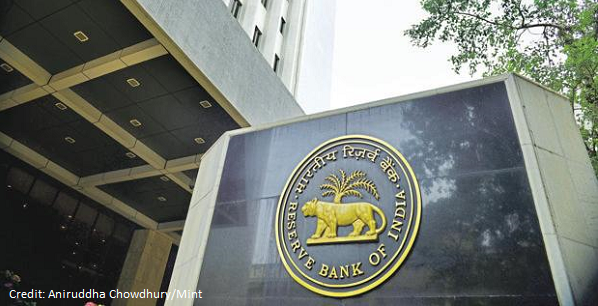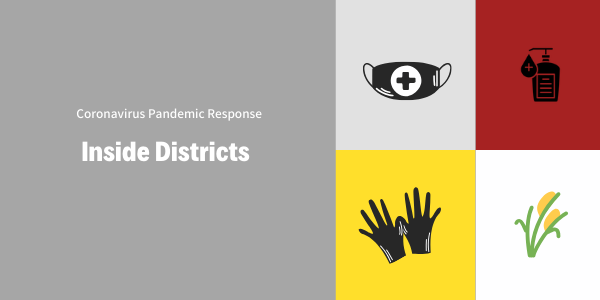My previous blog discussed the economics of the fiscal aspect of financing the relief effort and went into the details of what deficit financing means.
The monetary side of the story and what is no longer a Milton Friedman overhang
Globally, the case for deficit financing through private borrowing varies vastly for different countries. In the USA for example, there is plenty of private funding that has now been pushed to savings because of the economic slowdown. This, coupled with the fact that interest rates are slumped to near zero and the real interest rate is negative, provides an opportunity for the government to go on a borrowing spree without care despite the debt to GDP ratio climbing up. Essentially there is almost no cost of borrowing this money and high debt levels may be sustained because there is no inflationary pressure. In countries like India, however, the inherently weak fiscal situation of Indian banks and actual deficit levels aside, the question of inflation remains a big challenge.
So, is there another option by which we can generate a stimulus? Well, yes.
The monetary policy response, on the other hand, is slightly different. Essentially, expanding the money supply in the economy lowers interest rates enough for crucial investments in the economy to continue; this bypasses the otherwise impairing effects of rising borrowing costs at the time of recession and a cash crunch.
We are, however, in unusual times. Targeted relief packages are the only way one can hope to contain some of the dire costs of the engine of the economy grinding to a halt, but, more importantly, in lives being saved.
Leveraging monetary policy received a lot of attention in the 1970s during the times of United Kingdom’s Prime Minister Margaret Thatcher and President of the USA Ronald Reagan and Milton Friedman (one of Reagan’s economic advisors) is credited with bringing it to mainstream success. Monetarism, as the ubiquitous term was coined, provided a view that the supply of money, at any point in time in the economy, determines the GDP level of an economy by impacting interest rates. The influence of monetarism has been seminal for every decade facing a recession. But monetarism itself has changed drastically since the 1970s. Bigger economies have long been in a “liquidity trap” situation, in which real interest rates are sluggish and close to zero, often negative. The consequences of the risks involved with increasing the money supply in the economy have thus been disproved. Economists have long been scrambling for an explanation for this and new schools of thought have arisen to explain the rationale behind policies such as “helicopter money” and “quantitative easing”.
The next question would be – how does a central bank (CB) influence interest rates?
This is done through something called open market operations. There are several ways in which the CB can engage in some form of open market operations (OMO) [1], but what it usually does is buy security and in turn, capitalise [2] the banks. This is known as expansionary monetary policy. This adds credit to bank balance sheets that are, in turn, incentivised to give out loans. This pushes down the overall interest rate making it less costly to borrow money. How does this help at a time like the COVID-19 pandemic? Well, the economy is essentially in a freeze and no activity implies no new investments. But an expansionary policy like this mitigates some of the risk factors for the business sector to borrow right now.
The Indian monetary policy response has been to reduce the repo rate to 4.4 per cent. It also slashed the reverse repo rate to 3.75 per cent to discourage banks from parking money with the Reserve Bank of India (RBI) and encourage them to give out loans instead. On 27th March, RBI governor Shaktikant Das said that “monetary policy needs to proactively arrest any deterioration in aggregate demand, and create enabling conditions for businesses to normalise production and supply chains”[3].
Hey, so if the central bank can print money why does it not directly fund the government deficit instead? Because the risks to financing through money are manifold and countries that have suffered the fate of hyperinflation have often found its effects to be acute, re-setting trajectories of growth for generations later. Venezuela in South America, African country Zimbabwe and erswthile Weimar Germany have all served as fitting examples of experiments with expansionary policies that are best not repeated [4].
However, this has been the explorative policy response that governments have been toying with over the last few decades. Indeed, since an era of stagnation that has set in, in much of the developed world, central banks have been buying out huge quantities of government debt. This exercise is known as quantitative easing. Inflation has not been rising in most developed countries despite the pumping in of more liquidity. This has led economists to suspect that previously held models of money supply and prices are no longer valid, and that central banks should completely move away from inflation-targeting to nominal GDP targeting [5,6,7]. But will something similar work in India? Our inflation models are not akin to the West and the economic fabric (such as population, working age, supply and demand structures) is barely comparable. Besides, we always have a problem with runaway food and retail inflation. Remember the tomato and onion prices fiasco? [8]
Once again, however, it is important to stress that we are in uncharted territory right now.
Measures have been undertaken in the hope that banks will be lending loans and investors will make use of this opportunity to access capital at much lower costs.
Scholar Deepak Nayyar, advocates for an aggressive monetary policy stance for monetising the deficit at a time India needs to provide a stimulus package that is at least 3-5 per cent of the GDP. He says that the RBI should be buying more of Treasury bills and printing “helicopter money” directly for the government to finance immediate concerns. He also advocates for higher QE by the RBI through lines of credit to keep businesses from going under.*
The RBI, however, announced several other measures to maintain liquidity since its April 27th announcement to cut repo rates [9]. Among them, the RBI has: i) conducted Targeted Long Term Operations (TLTO) [10] with non-banking financial companies (NBFCs) to provide them access to cheaper capital for a longer period of time, ii) provide additional refinancing options to All India Financial Institutions (AIFs) that play a crucial role in providing loans to the agricultural, rural and small business sectors, and iii) increased ‘ways and means’ (WMA) limits for both the the Union and state governments to assist them in undertaking relief measures.
These measures have been undertaken in the hope that banks will be lending loans and investors will make use of this opportunity to access capital at much lower costs. States too have been incentivised to dip into a sizable chunk of their drawing provisions with the RBI, to that are much cheaper than market loans. However, experts have said that these measures still prove insufficient and may not be enough to provide as much of a cushion as is required under the circumstances [11].
*Unlocking the economy: policy roadmap for India after April 14, Deepak Nayyar, 9 April, 2020, Livemint. Last accessed on: 15 April 2020.
[1] A monetary policy exercise when the RBI buys Government Securities from the market to enhance the money supply or when it sells them to the market to reduce the money supply in the financial system.
[2] When banks are sufficiently capitalised, it means that they have enough assets that can be converted to cash to meet short-term and long-term obligations.
[3] Minutes of Monetary Policy Committee Meeting, 27 March 2020 (RBI Press Release). Last accessed on: 15 April 2020.
[4] Explained: why poorer nations can’t just print more money and become rich (Alan Shipman, 19 December, The Conversation, reprint Business Standard). Last accessed on: 15 April 2020.
[5] Most central banks in the world try to maintain a particular level of inflation in the economy that they estimate to be sustainable with aggregate demand and supply forces. In India, both the wholesale price index (WPI) and the consumer price index (CPI) are used as measures of inflation.
[6] Nominal GDP targeting is when the central bank targets the level of growth of nominal spending in the economy.
[7] Why printing money could have stopped the Great Recession (Story interview Scott Sumner, July 8 2014, Vox). Last accessed on: 15 April 2020.
[8] Flooding in major onion producing states leads to spike in prices (9 November 2019, Jayashree Bhosale ET). Last accessed on: 15 April 2020.
[9] RBI Governor’s statement, 17 April 2020. Last accessed on: 1 May 2020.
[10] FAQs on LTOs, RBI, 22 April 2020. Last accessed on: 1 May 2020.
[11] RBI measures sufficient, not substantial; Guv doing balancing act: Experts (17 April 2020, Business Standard). Last accessed on: 1 May 2020.
Meghna is a Research Associate at Accountability Initiative.
To cite this blog, we suggest the following: Paul, M. (2020) Explaining Monetary Policy in the Time of COVID-19. Accountability Initiative, Centre for Policy Research. Available at: http://accountabilityindia.in/blog/explaining-monetary-policy-in-the-time-of-covid-19/.










